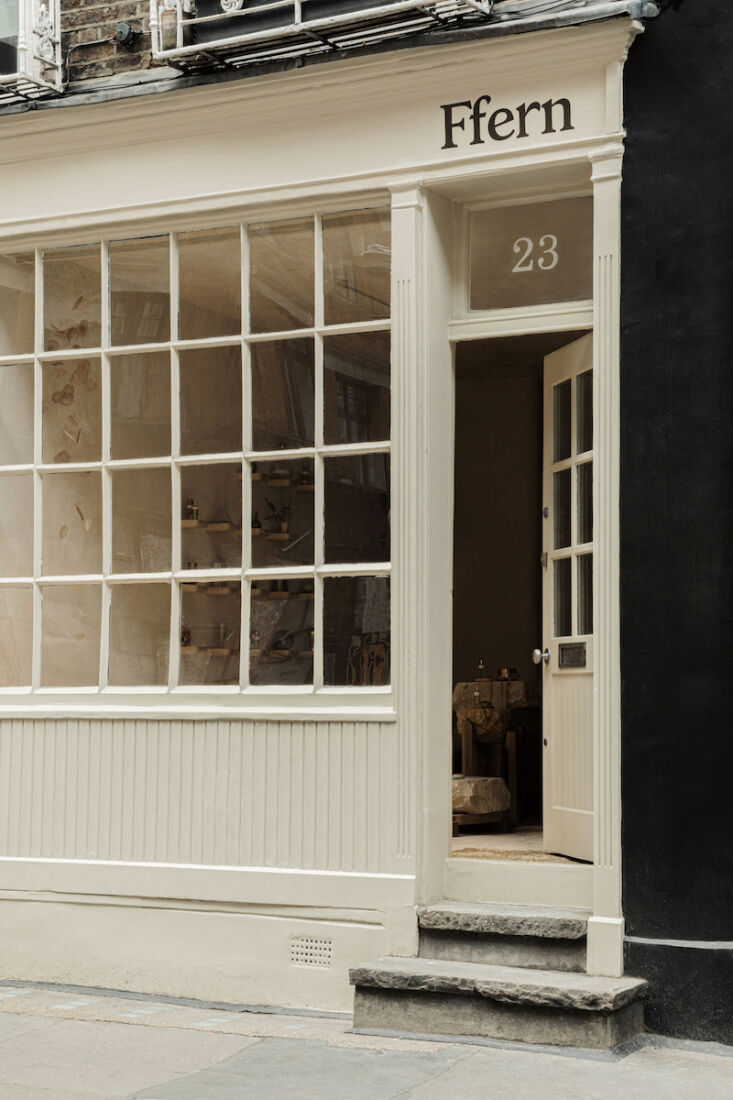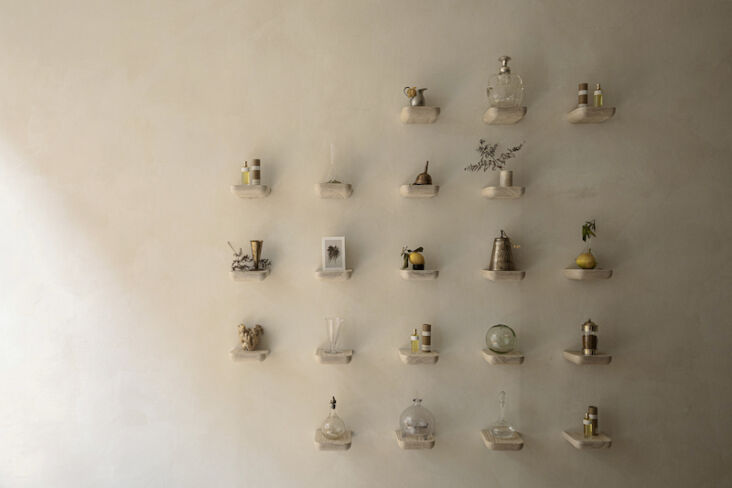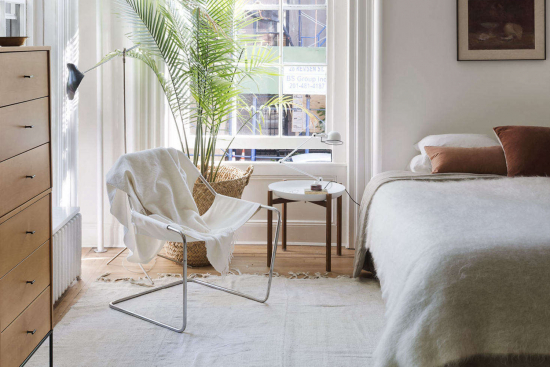On the Nose: Ffern in London, a Perfume Shop With a Sensual Aura
You can tell from the hand-hewn front door steps that there is something special happening at 23 Beak Street in London’s Soho. On entering the space—home to the Somerset-based organic perfume makers Ffern—the cacophony of the street gives way to a multi-sensory experience that is immersive and cocooning and hard to leave.

“Behind all that we do at Ffern is the urge to reconnect with nature,” explains Emily Cameron, the creative director who co-founded Ffern with her brother, Owen Mears, in 2017. “In making seasonal fragrances—one for autumn, winter, spring, and summer—we hope to encourage people to live more in tune with the rhythms of the year. We celebrate our natural ingredients for their complexity and depth. Even our packaging is biodegradable, being made in the UK from mycelium.”
It follows that the design for their flagship store also put nature first. It is entirely plastic free, composed of earth-friendly materials that celebrate craftsmanship and—as a result—it will leave a lighter footprint on the planet. How did they do it?

Emily turned to Louisa Grey, founder of House of Grey, with a deceptively simple brief. “We wanted to make a space that would reflect the natural environment from which Ffern was born: the lower levels of Exmoor and the Blackdown Hills,” Emily explains. “The beauty of this Somerset landscape is both wild and understated, filled with muted colors and the occasional dazzling rock formation or field of flowers.”
Louisa’s studio specializes in salutogenic design, an approach that originated in the healthcare industry and is focused on creating “healing spaces.” For Louisa, this translates extremely well across retail, commercial, and private residential homes.
“The retail sphere has become very ‘templated,’ and the majority of retail spaces feel very synthetic—highly illuminated with unnatural strip lighting, no air flow—and the result is a space which isn’t warm, inviting, or unique,” says Louisa. “Most retail design is situated in an extremely built-up environment, not a natural ecosystem to feel at ease in, and for me it has the opposite effect of feeling grounded and centered. I personally find myself wishing to be elsewhere.”










